Landscape Architecture for Landscape Architects › Forums › PLANTS & HORTICULTURE › Favorite Tree
- This topic has 1 reply, 17 voices, and was last updated 17 years, 4 months ago by
 Eric Galvin.
Eric Galvin.
-
AuthorPosts
-
June 10, 2008 at 12:25 pm #177524
 Kevin J. GaughanParticipant
Kevin J. GaughanParticipantI figured we would start easy. Every landscape architect has a favorite tree (or two), so what is yours?
June 10, 2008 at 12:41 pm #177542 Eric GalvinParticipant
Eric GalvinParticipant…. hmmm, choosing one is too hard. my two favorites are,
Foster Holy http://www.mobot.org/GARDENINGHELP/PLANTFINDER/Plant.asp?code=Q190
and the Little gem magnolia http://edis.ifas.ufl.edu/ST375
.. i think.. ill probably change my mind tomorrow…. ~*~June 10, 2008 at 12:58 pm #177541 Kevin J. GaughanParticipant
Kevin J. GaughanParticipantI have two. My first is the Bald Cypress (Taxodium distichum).

It has several qualities that I find very intriguing. First of all it is a deciduous conifer, which is unique and gives is a very powerful presence in the winter time, especially when it is near other evergreens. Second, trees that grow in water are sweet, this one especially with its technique of developing “knees” to help get oxygen to the routes” Finally, I love the way the trunk buttresses at the bottom, which brings me to my second favorite.
#2 Fig Trees (pretty much anything the begins with Ficus)
Ever since I spent a summer in Costa Rica I have been in love with figs, especially strangler figs. They have some of the most unique habits of any other tree, and become nothing short of magnificent as they mature. Also, it is amazing how much life in the rainforest is supported by their fruit, and also that their whole existence is dependent a tiny wasp. Cool stuff.
 June 10, 2008 at 2:33 pm #177540
June 10, 2008 at 2:33 pm #177540Joshua Haddad
ParticipantDawn Redwood (Metasequoia glyptostroboides )
American Elm (Ulmus americana)
Honey Locust (Gleditsia triacanthos var. inermis)
London Plane Tree (Platanus × acerifolia)
Weeping Beech (Fagus sylvatica var.pedula)
Flowering Japanese Sakura (Prunus serrulata)
Redbud (Cercis canadensis)
Lilac (Syringa sp.)
Crepe Myrtle (Lagerstroemia indica)
Stewartia (Stewartia sp.)
Flowering Dogwood (Cornus florida)All fruiting + flowering trees: Apricot, Plum, Apple, Peach, Nectarine, Cherry, Orange, Lemon, Lime
June 10, 2008 at 4:26 pm #177539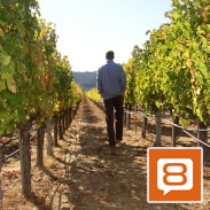 Andrew SpieringParticipant
Andrew SpieringParticipantJacaranda mimosifolia

 June 16, 2008 at 4:00 am #177538
June 16, 2008 at 4:00 am #177538 Ryland FoxParticipant
Ryland FoxParticipantGrowing up in the south I have strong connection with Live Oaks. (Quercus Virginiana?) Seeing them with
Spanish Moss hanging down makes me instantly feel at home.
I think that Eucalypts have the most personality. Since I moved to Australia I have been amazed by the vast variety of types and their distinctness. They can be ghostly and ethereal, or stout and commanding. That said, I have no real emotional attachment to them, they are incredible but they are not my landscape.
 June 16, 2008 at 4:31 pm #177537
June 16, 2008 at 4:31 pm #177537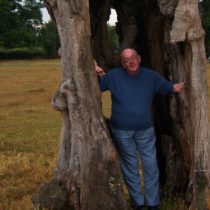 Les BallardParticipant
Les BallardParticipantA lot of pro folk like the tulip tree and i do too – and i am drawn to our ash – being a relative of the olive i wonder if there is oil in them there keys? It leafs last and falls green. It is the world tree (Yggdrasil) and provider of survival bows. There are stools here coppiced for 2000 years 20 feet across – but work on them stopped 200 years ago when farmers could order their tool handles and five bar gates from central points and workers on the land went to work in the towns. (When I was a boy you could still tell what county of England you were in by the design of farm gates.) Then there is the rowan – the little mountain ash that grows so high up, provides sweetener (sorbitol) and white inlay wood and is found in churchyards and in stick bundles over cottage doorways to repel evil. I like oak, though do not like the thought of the summer rain of caterpillar (and other) leavings that you get coated with.
Then there is the kind of tree not in the books. It is the hollow tree, that you can stand in and hear mutter and curse, hum and creak. The one with the bats and birds that change shifts at dusk and dawn. The one to make you antsy as you hear smaller inhabitants slither, chew and bore – yet it will still be there in a century. Often, it is also the king or father oak tree in a working wood, that felled timber is hauled to for the night, so that genus loci and fey creatures – and more mundane fauna – can return to the forest before the tree is carted off for use. Our forbears coppiced, or pollarded it, a few times when young to make it last. Maybe it is on a farm, next or near to the barn to provide a motorway – for those tree spirits again. That way they would play in the barn’s beams and make it a healthy, happy place, before using the line of trees to get back to the wood. Over around 800 years, in some cases, successive generations have made a swing there, been drawn or painted or had their photographs taken under or near it. Scars testify to grown-out hearts and initials of lovers long ago and, with nails well above where they once were, tales of how high their children were each year. The roots may hide a ring, or some other treasure, guarded by a wish that a lover come home from the wars or just notice the one who put it there. Be it an oak or a beech, a hornbeam – or even a buttressed ash – these are the trees we need most for they tell of us and our interface with them. They are our family trees and we are the poorer for a couple of centuries after a terrible storm has taken so many, as happened in the UK in 87 and 90.
A tree that does often survive, for 3000 years, is the yew. (It is now said it can regenerate and last another 3000 years.) It is the Ankerwycke Yew that watched King John, across the Thames at Runnymede, sign the Magna Carta. Another yew used to stand where the Nottingham Goose Fair is still held today, but there were many. Weddings and funerals and all great occasions were held by the nearest great yew so that it would see and remember. A dense softwood, with berries capable of killin (or curing some cancers first herbally – the berries give off an otherwise toxic gas – and now with the drug taxin), the yew has a thin bark. The druid – or equivalent – could read back in time those things the tree had seen like in a photo album. Other trees could be used too, but not as well. A slice of yew held in silver was worn at important occasions to remember it or them as surely as a silicon chip does now. (Oh and a retired engineer has found out how to make the silver adhere again without his realising it was an ancient craft that had been forgotten.) Overall, yew – again a tree of bowyers – has to be a favourite.
So, thats just the 3 then – the hollow tree, the yew and the one for the incontinent that never grows – the closest lavatory – but they are all good really, aren’t they? So plant some! (And it is worth noting that folk are now having long-drop composting toilets put at the end of their
June 20, 2008 at 9:16 pm #177536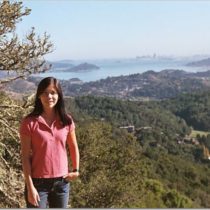 TraceyParticipant
TraceyParticipantI really love the Ginko bilboa. Beautiful in summer and fall, and the leaves have a uniquely beautiful shape. It has remarkable genetic flexibility… relatives of the tree have been around for 270 million areas in a wide geography.
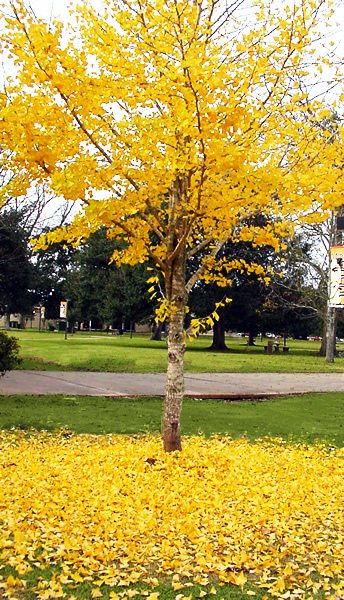
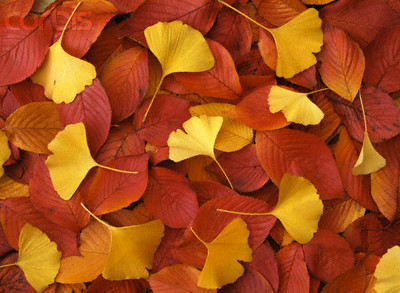
Oaks are a favorite of mine, too, because they remind me of the West and the area I grew up in (Ventura County). We have many jacarandas in San Diego and they are widely enjoyed.
June 21, 2008 at 1:52 am #177535 Michelle DervissParticipant
Michelle DervissParticipantPalms . Love ’em.
A fave is Bismarckia nobilis but I’d take a plain old lovely Phoenix canariensis or settle for a Licuala grandis any day.
Photo attached : Bismarckia nobilis taken in Bali IndonesiaJuly 7, 2008 at 10:15 pm #177534 NikiParticipant
NikiParticipantI love the Koelreuteria paniculata or Golden Raintree…it just seems to have something for all seasons. I’m also a big fan of Live Oaks, and Yoshino Cherry trees.
July 9, 2008 at 12:37 am #177533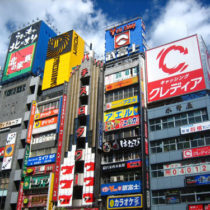 NeleParticipant
NeleParticipantMoreton Bay fig (ficus marcophylla). Has been my fave for years…
 July 13, 2008 at 9:41 am #177532
July 13, 2008 at 9:41 am #177532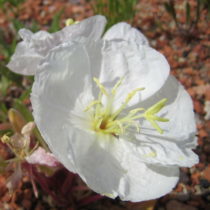 Rosie MohorkoParticipant
Rosie MohorkoParticipantAlbizia julibrissin (Persian Silk Tree or Pink Siris)
July 15, 2008 at 6:01 pm #177531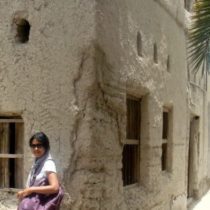 Ony SelokarangParticipant
Ony SelokarangParticipant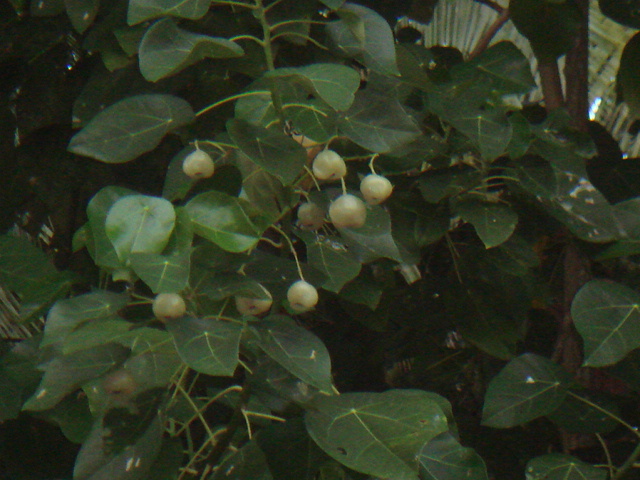
Hernandia peltata
July 23, 2008 at 5:41 pm #177530 NZParticipant
NZParticipantAutumn Blaze Maple. Really good colors in the fall, which is my favorite time of year.
I also like the Japanese Maple (considered a tree though?) because of its looks.
July 23, 2008 at 11:18 pm #177529red bud tree
-
AuthorPosts
- You must be logged in to reply to this topic.


